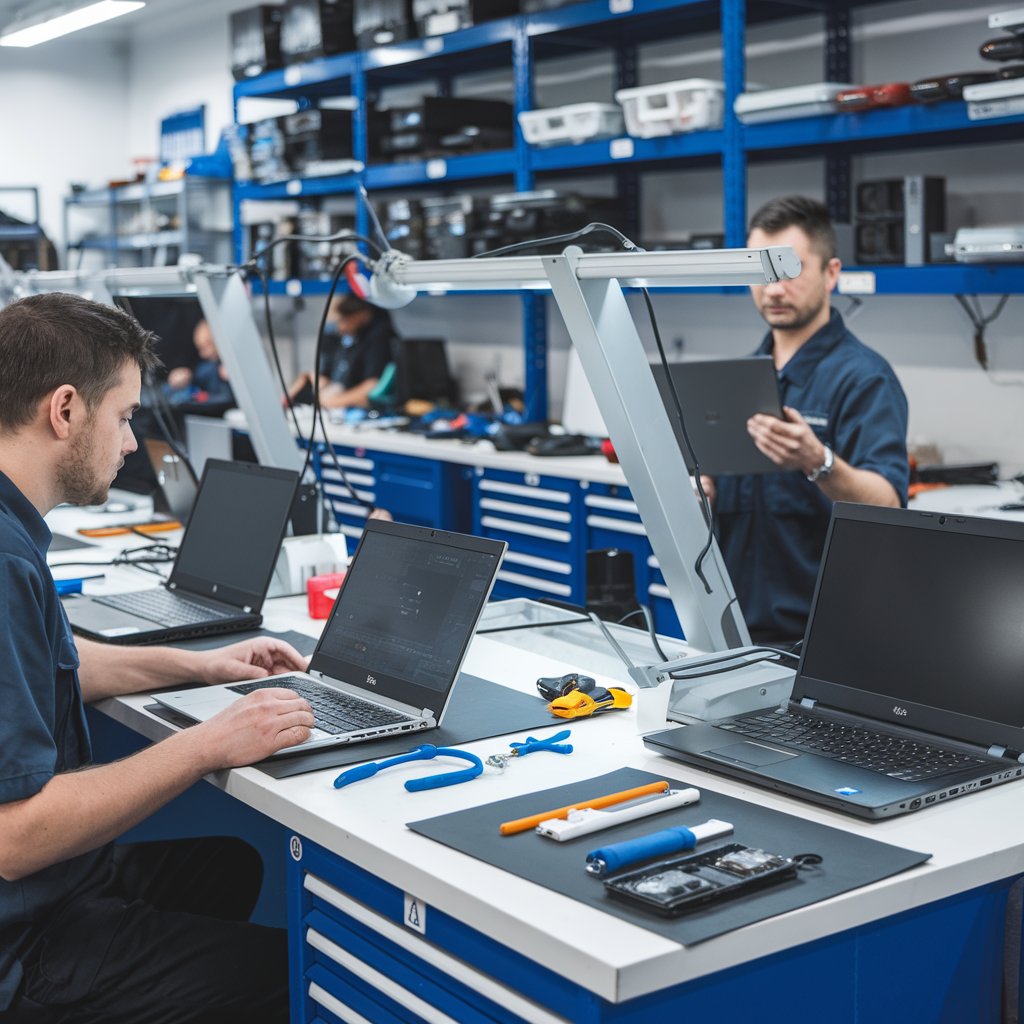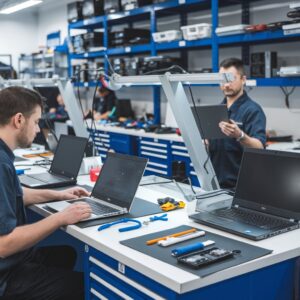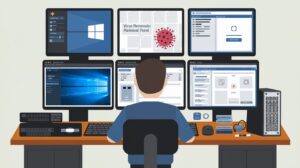Laptop Motherboard Repair – Laptops are an essential part of modern life, powering businesses, connecting families, and driving innovation. At the heart of this indispensable device lies the motherboard—its central nervous system. A faulty motherboard can bring even the most robust laptop to a grinding halt, leaving frustrated users in need of quick, reliable fixes.
For laptop repair services, understanding the intricacies of motherboard repair is not just a useful skill—it’s a business necessity. This guide will walk you through laptop motherboard diagnostics, repair, and replacement, helping you provide top-notch service to our customers.
Understanding Laptop Motherboard Repair
Types of Laptop Motherboard Repair
Laptop motherboard repair falls into two main categories:
- Chip-Level Repair: This involves fixing issues directly on the integrated circuit (IC) chips and components of the motherboard. It’s a detailed, technical process targeting specific elements like transistors, capacitors, or ICs.
- Component-Level Repair: Focuses on replacing damaged or malfunctioning components like ports, connectors, or power jacks on the motherboard without affecting the chips directly.
Both types demand precision, tools, and expertise, making them a challenging yet rewarding aspect of laptop repair.
The Role of the Motherboard
The motherboard is the backbone of a laptop’s performance. It connects all critical components—CPU, GPU, RAM, and storage—ensuring seamless communication and operations. Any disruption to these connections due to motherboard failure can drastically impact a laptop’s functionality.
Signs of a Faulty Laptop Motherboard
Knowing the symptoms of a damaged motherboard can streamline diagnostics and improve repair times. Here are some common cues to watch out for:
- No Power or Boot Issues: Laptop fails to turn on or restart.
- Random Shutdowns: The laptop powers off unexpectedly.
- Overheating: A sign of damaged power regulators or components.
- Performance Drops: Slow operations or lagging.
- Error Codes or Beeping: BIOS beep codes indicating hardware failures.
- No Display: The screen stays blank, though power is on.
Diagnosing Motherboard Issues by our Experts
Here’s how to pinpoint motherboard faults:
- Visual Inspection: Check for burnt components, damaged capacitors, or loose connections.
- Error Detection Tools: Use a POST (Power-On Self-Test) card to decode error messages.
- Multimeter Testing: Test power input/output and component integrity.
- Process Elimination: Test other hardware (RAM, CPU, GPU) to rule out peripheral issues.
Laptop Motherboard Repair vs. Replacement
Repair or Replace?
Deciding between repair and replacement depends on various factors:
- Extent of Damage: Minor faults like damaged capacitors are often repairable, while severe PCB (Printed Circuit Board) burns may require replacement.
- Cost Consideration: Repairs are generally cheaper but may not be viable for extensive damage.
- Availability of Parts: Replacing older or rare motherboards can be challenging due to limited stock.
Cost Analysis
- Repair Costs: Typically range based on the issue.
- Replacement Costs: Motherboard replacement cost, depending on the model, excluding Service Charge.
The Repair Process by our experts use the tools
Step-by-Step Guide to Motherboard Repair
Follow these steps for effective motherboard repair:
- Gather Tools: Soldering iron, multimeters, POST cards, thermal paste, and ESD protection equipment.
- Diagnose the Problem: Follow the methods mentioned earlier to identify the fault.
- Replace Faulty Components: Swap out damaged ICs, capacitors, or connectors.
- Reassemble Laptop: Ensure all screws and connections are securely in place.
- Test Thoroughly: Run diagnostics to confirm the fault is fully resolved.
Tools Required for Chip- and Component-Level Repairs
- Soldering station
- Hot air rework station
- Oscilloscope
- Magnifying lamp
- Cleaning alcohol/isopropyl alcohol
The Replacement Process
Step-by-Step Guide to Motherboard Replacement
When repair isn’t an option:
- Find a Compatible Motherboard: Confirm compatibility based on the laptop model and specifications.
- Disassemble the Laptop: Remove battery, RAM, storage, and all connected components carefully.
- Install the New Motherboard: Position the new motherboard and secure it with screws.
- Reconnect Components: Reattach all peripherals, wiring, and screws.
- Apply Thermal Paste: Add thermal paste for proper heat dissipation before securing the heat sink.
- Reboot and Test: Confirm all hardware is functioning correctly.
Precautions for Replacement
- Always disconnect the battery and charger.
- Use anti-static wristbands to prevent static damage.
- Double-check connector placements before powering on.
Tips for Preventing Laptop Motherboard Damage
We prolong the lifespan of our customers’ laptops with these preventative measures helpful:
Maintenance Practices
- Regular Cleaning: Dust can cause overheating; advise users to clean vents and fans periodically.
- Proper Ventilation: Encourage the use of laptop stands to enhance airflow.
- Quality Chargers: Non-standard chargers can cause power fluctuations and damage.
Environmental Factors
- Avoid Liquids: Advise users against consuming drinks near laptops to prevent spills.
- Temperature Control: Extreme heat or cold can damage the motherboard.
- Surge Protectors: Recommend surge protectors to shield laptops from power surges.
Empower Your Laptop Repair Services
Laptop motherboards are complex yet fascinating pieces of technology. Diagnosing and repairing them can save our customers time and money while positioning your services as a trustworthy solution for their tech issues.
Whether it’s chip-level fixes or full replacements, having the right tools, expertise, and best practices ensures exceptional service quality. Need support for advanced repair projects or want to expand your business offerings? Contact us today for comprehensive hardware repairs, from screen replacement to motherboard troubleshooting.


